Deborah Lou Turbeville (July 6, 1932 – October 24, 2013)[1] was an American fashion photographer. Although she started out as a fashion editor at Harper's Bazaar, she became a photographer in the 1970s.[2]
She is widely credited with adding a darker, more brooding element to fashion photography, beginning in the early 1970s[1] – she, Guy Bourdin and Helmut Newton changed it from traditional, well-lit images into something much more "edgy" looking.[1] However, unlike the "urban erotic underworld" portrayed by her contemporaries, Turbeville's aesthetic tended towards "dreamy and mysterious," a delicate female gaze.[2] She was the only woman and only American among this trio.[1] In 2009, Women's Wear Daily wrote that Turbeville transformed "fashion photography into avant-garde art."[1]
Her photographs appeared in numerous publications and fashion advertisements, including ads for Bloomingdale's, Bruno Magli, Nike, Ralph Lauren and Macy's.[1]
Born in 1932 in Stoneham, Massachusetts, Turbeville died from lung cancer at St. Luke's-Roosevelt Hospital Center in Manhattan on October 24, 2013, at the age of 81.[1][3]
Contents
Biography[edit]
Childhood[edit]
According to Turbeville, her work was deeply inspired by her childhood: "I am like a child, I must manage it every hour of every day." She was born into a wealthy family in New England that desired to be both distinguished and isolated, but paradoxically suffered from this isolation.
Her paternal grandfather had dreamed of being a painter in Paris. Upon his return to the United States, he bought a large house, isolated in the periphery of Boston, which Deborah's mother and aunts inherited. Deborah's father, who was from Texas, also lived in the house. This familial community, which cultivated its members' intellectual superiority through frequent trips to Boston's opera and cinemas, also suffered from this exile in the suburbs: "My mother deeply despised mediocrity, and that's what this kind of small city represented for her."
Deborah had an older brother called Tom, who lived in New York on Riverside Drive at the same time Deborah was living there. She was "timid and shy," according to her mother, Turbeville wrote in the introduction to her book Les Amoureuses du temps passé: "I grew up in the little world of my parents, my aunts, my grandmother, where they all protected me and I did what I wanted and I never conformed to what the other children were doing, and I never resembled them." Her mother would tell her: "Don't ever try to be like others, strive to be yourself, be original." She grew up in a world of adults: "In all that my parents did, I accompanied them."
One event may illustrate the aspiration of the Turbeville family to distinction: in elementary school one asked a young Deborah Turbeville and her classmates to make a drawing in chalk about Christmas or America. Turbeville recounts that her teacher did not like the content of her drawings ("apparently they were very weird") and she was dismissed from school for a few weeks. When she remembers this event, Turbeville has said, "Sometimes, I still see myself today as that child who made those drawings, and who continues to make things quietly."
She was a student at Brimmer and May School in the Bay of Boston, and has always cited as her first sources of inspiration the narrow cobble streets, Louisburg Square, snow and tinted windows. "Deborah liked the climate, the fog, the snow storms, the wind, and the raging oceans."
In addition to her family home on the outskirts of Boston, Turbeville also spent her summers in their vacation home in Ogunquit in Maine, a place she described as "very sorry, very sinister, very beautiful." It seems that these abandoned and windswept places have inspired much of her work, since one often finds empty beaches and forgotten resorts in her photographs.
Style[edit]
Technique[edit]
Turbeville's photographs are recognizable by their grain, by their colors of pastel, sepia, or black and white, and by the image blurring. She sometimes reworks her shots by scraping or taping them with the help of her assistant and collaborator, Sharon Schuster. According to Pete Silverton, these photographs are "consciously damaged goods." Furthermore, according to Turbeville, "I destroy the image after having created it (...) Erasing a bit in such a manner that it is never completely there..." Or: "The idea of disintegration is really at the heart of my work." This work of alteration is one of the elements that make Turbeville an artist, as she provokes a reflection on the medium, and the medium is in itself significant. Her images, "scraped, twisted, erased, damaged artificially to give the impression of old clichés, contradict the technical perfection that even an amateur photographer can get these days. Turbeville exposes the lie that with technique and determination an artist who seeks to create imaginative content resonates ambiguities." "Yes, the images' apparent stillness hides an undercurrent of violence (...) This violence is reinforced by the artist in her work: she violates her own images."
Subjects[edit]
Femininity[edit]
Refusal of conventions[edit]
During the 1970s, fashion photography moved more towards sexual provocation and tended to become, according to Nancy Hall-Duncan, "a subdivision of the culture of pornography." Turbeville took its misty atmospheres and combined them with models that communicated neither between one another nor with the viewer. Nancy Hall-Duncan notes that these women seemed "locked in their solitude," an impression reinforced "by lazy, soft poses." And, she added: "In the broadest sense, Turbeville's photographs reflected the psychological collapse of the modern world. The slightly flabby pose (...) gives the impression of uneasiness. (...) The new state mindset, the new attitude of young women today must be reflected in the way the model holds herself. To realize this was for Turbeville, she said, a turning point in the evolution of her style."
The Bathhouse perfectly illustrates this desire not to conform to gender conventions of the time and to resist male domination: "the five models broke all laws that say what women in bathing suits should look like, namely: appetizing, succulent, bitches that want to have fun ... in short, women who are there for men. (...) If sex comes to anyone's mind, it would only as the memory of a vacuum or futility. Some of the women were skeletal, not shaped for the look of a man but on the verge of anorexia: a rejection of the adult female state and a refusal of men." Although her contemporaries, such as Helmut Newton, tended towards more provocative or taboo subjects in their photography, Turbeville's "work grappled with the interior life of women and their changing place at a time when longstanding gender roles were" in great flux.[4]
Rapport with the models[edit]
Turbeville translated this refusal of photographic conventions that make the model an object of the male gaze naturally in her rapport with the models. They are not malleable objects, but people with whom Turbeville recognized her failure to communicate perfectly. She was even scared of them, as she could not have the smallest preconceived idea of them. "I am often scared, of people. This is found in the photos I take: almost the feeling of humiliation or embarrassment. The young women lower their eyes, or look elsewhere, they cannot look the lens in the face. And I, I cannot force them to look directly in the lens, or make a face like everything is great and it's truly cool!" Indeed, in the collective book Women on Women, about women photographing other women, she wrote that in her photos, "there is the gnawing feeling that something is wrong. My work is not complete if it does not contain some vestige of this frustration in the final prints."
Thus, in her work in fashion photography, she tried to avoid a "stereotypical ideal" and glamour: "It wasn't the perfectly beautiful girl who made me want to take photos, but the girl with an intrigue in her face, with a profoundness below the surface." Accordingly, the models themselves take precedence over the "innocuous, powder-hued separates of the seventies and eighties," despite their averted gazes.[4]
In popular culture[edit]
In February 2014, Erika Cavallini’s fall collection was photographed at an event using rising photographers from "#recruited" on Instagram and from Vogue Italia.[3] The event was "a tribute to Deborah Turbeville, who died" October 2013 "at the age of 81."[3]





































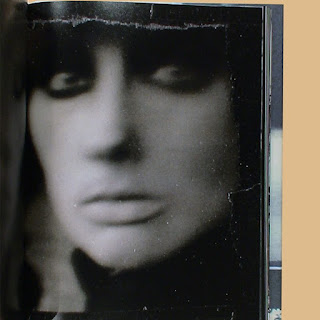
























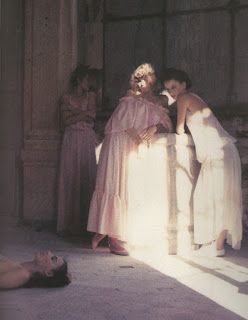





























































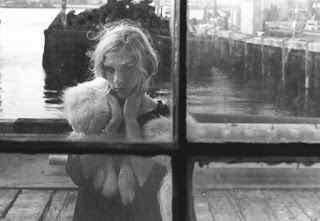



























































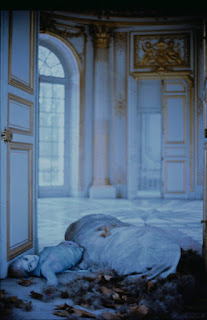










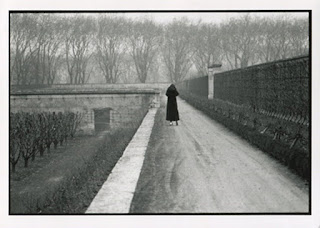













No comments:
Post a Comment